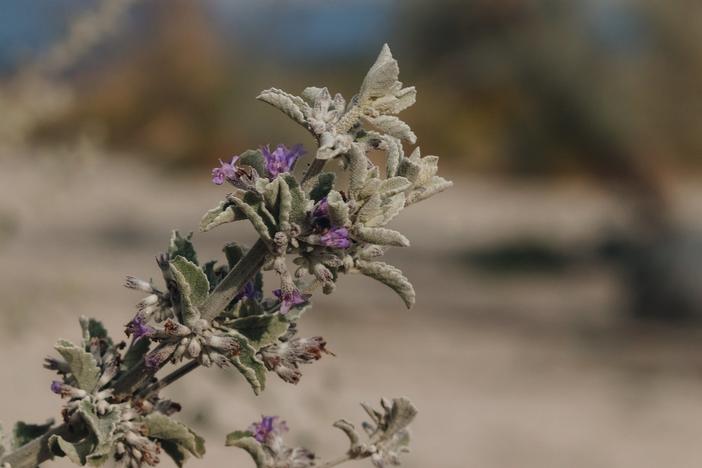Desert Lavender
(Condea emoryi)
Desert Lavender (Condea emoryi)
/
/

Joshua Tree National Park
PDM 1.0
Image By:
Joshua Tree National Park
Recorded By:
Copyright:
PDM 1.0
Copyright Notice:
Photo by: Joshua Tree National Park | License Type: PDM 1.0 | License URL: https://creativecommons.org/publicdomain/mark/1.0/ | Uploader: Joshua Tree National Park | Publisher: Flickr




































































Estimated Native Range
Summary
Condea emoryi, commonly known as Desert Lavender, is a shrub that can be evergreen or cold deciduous, depending on the local climate, and is native to desert washes and scrublands in the Southwestern USA and Northwestern Mexico. It is a member of the mint family and can reach a height of 15–18 feet in optimal conditions, with a similar spread. The plant has a rounded form with dense, multi-stemmed growth. It produces violet-blue flowers up to 1 inch in size, located in the leaf axils. These flowers are particularly showy, blooming profusely along the main stem and side branches, typically from late winter to early spring. The foliage is oval, whitish-gray-green, with serrated margins and a hairy texture, measuring 2–3 inches long. Desert Lavender is known for its aromatic leaves, which have a lavender-like fragrance, and it serves as an attractor for honeybees and other pollinators.
Desert Lavender is valued for its drought tolerance, aromatic foliage, and the ability to attract wildlife. It is often used in xeriscaping, as a specimen plant in rock gardens, or in naturalistic plantings in arid regions. It requires minimal maintenance once established and thrives in full sun with low water needs. The plant prefers well-draining soils and is tolerant of poor soil conditions. While generally pest-free, it can be susceptible to root rot if overwatered. Desert Lavender is not known for aggressive roots or significant disease problems, making it a low-maintenance choice for gardeners in suitable climates. However, it may not survive in regions with cold, wet winters.CC BY-SA 4.0
Desert Lavender is valued for its drought tolerance, aromatic foliage, and the ability to attract wildlife. It is often used in xeriscaping, as a specimen plant in rock gardens, or in naturalistic plantings in arid regions. It requires minimal maintenance once established and thrives in full sun with low water needs. The plant prefers well-draining soils and is tolerant of poor soil conditions. While generally pest-free, it can be susceptible to root rot if overwatered. Desert Lavender is not known for aggressive roots or significant disease problems, making it a low-maintenance choice for gardeners in suitable climates. However, it may not survive in regions with cold, wet winters.CC BY-SA 4.0
Plant Description
- Plant Type: Shrub
- Height: 4-6 feet
- Width: 4-6.5 feet
- Growth Rate: Moderate
- Flower Color: Purple
- Flowering Season: Winter
- Leaf Retention: Deciduous
Growth Requirements
- Sun: Full Sun
- Water: Low
- Drainage: Medium
Common Uses
Bee Garden, Drought Tolerant, Fragrant, Low Maintenance
Natural Habitat
Desert washes and scrublands in the Southwestern USA and Northwestern Mexico
Other Names
Common Names: Chia, Desert-Lavender
Scientific Names: , Hyptis emoryi, Condea emoryi, Hyptis emoryi var. palmeri, Hyptis emoryi var. amplifolia, Hyptis emoryi var. emoryi, Hyptis palmeri, Mesosphaerum emoryi, Mesosphaerum palmeri,
GBIF Accepted Name: Condea emoryi (Torr.) Harley & J.F.B.Pastore